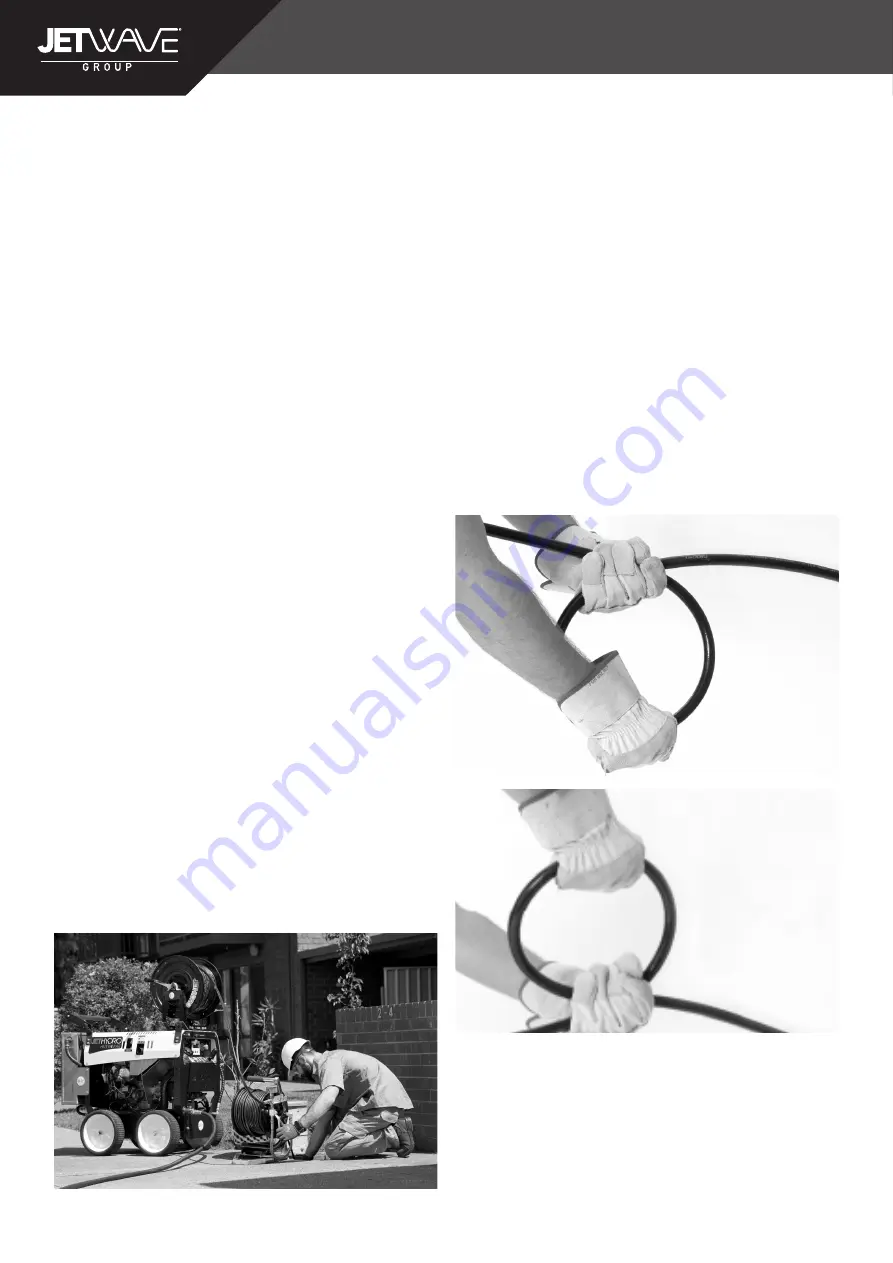
SCORPION G2 MANUAL - WATER JETTER/DRAIN CLEANER
12
6. If needed, turn the unloader valve while monitoring the
pressure gauge on the unloader valve to adjust the
pressure as desired (clockwise to increase pressure,
counter-clockwise to decrease pressure). Do not
exceed the machine pressure rating. Do not force the
unloader valve or use wrenches or tools to turn. This
will damage the unloader valve. Pressure gauge on the
remote reel will read lower than unloader valve gauge,
depending on hose size and length.
If the jetter will not generate the rated pressure or is erratic
• Make sure the engine throttle is properly adjusted to
the full open position.
• Turn unloader valve clockwise to increase pressure. Do
not force.
• Inspect system for leaks. Use caution during inspection
to prevent injury. If leaks are found, shut jetter OFF
before fixing.
• Turn the jetter OFF. Check the inlet tank and filter and
make sure that they clear of debris.
• Make sure there is adequate water flow to the jetter.
• Turn the jetter OFF. Remove the nozzle and clean the
orifices with the nozzle cleaning tool.
• Run the jetter without a nozzle on the hose to remove
air or debris from the system. Turn the jetter OFF
before removing or attaching the nozzle.
6. Assume a proper operating position.
• Be sure you can control the ON/OFF action of a water
control valve (ball valve or foot valve). Do not turn the
valve ON yet. In case of emergency you must be able
to turn off water flow.
• Be sure that you have good balance and do not have
to overreach.
• You must be able to place one hand on the jetter hose
at all times to control and support the hose.
• You must be able to reach the reel for coiling the hose.
This operating position will help to maintain control of the
jetter hose. Jetting the Drain
When jetting a drain, typically the hose is fed into the drain
the full distance to be cleaned and slowly pulled back. This
allows the high pressure water directed at the drain walls to
remove build-up.
Release the locking pin on the hose reel (Figure 2). With
at least 1m (3 ft) of hose in the drain and one hand on the
hose to control its movement, open the flow control valve.
The reverse jet thrusters on the nozzle will help pull the
hose into the drain. Feed the hose in the as far as needs
to be cleaned. If the hose stops, it has encountered some
type of obstruction.
If the nozzle cannot pass through an obstruction, such as a
change in direction (trap, turn, etc.) or a blockage.
• Use sharp thrusts of the hose.
• Rotate the hose a quarter to half turn to orient the
set of the hose to the direction change (If the hose is
rotated, once through the obstruction, turn the hose
back to help prevent kinks) See Figure 13.
• Use a flexible leader or smaller diameter hose.
Figure.12 - Proper Operating Position





























